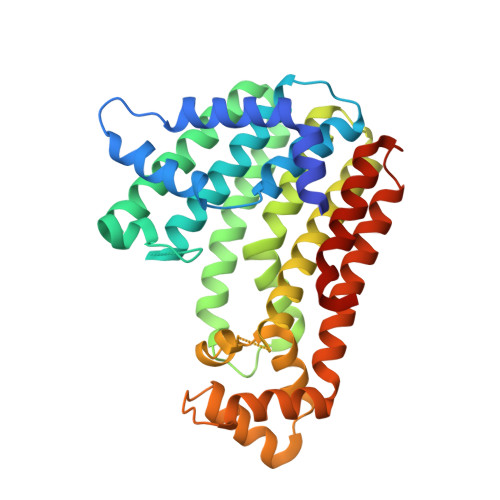Prediction of function for the polyprenyl transferase subgroup in the isoprenoid synthase superfamily.
Wallrapp, F.H., Pan, J.J., Ramamoorthy, G., Almonacid, D.E., Hillerich, B.S., Seidel, R., Patskovsky, Y., Babbitt, P.C., Almo, S.C., Jacobson, M.P., Poulter, C.D.(2013) Proc Natl Acad Sci U S A 110: E1196-E1202
- PubMed: 23493556
- DOI: https://doi.org/10.1073/pnas.1300632110
- Primary Citation of Related Structures:
3LOM, 3LVS, 3MZV, 3NF2, 3OYR, 3P41, 3P8L, 3P8R, 3PDE, 3PKO, 3Q1O, 3Q2Q, 3QQV, 3RMG, 3TS7, 3UCA, 4DHD, 4F62, 4FP4 - PubMed Abstract:
The number of available protein sequences has increased exponentially with the advent of high-throughput genomic sequencing, creating a significant challenge for functional annotation. Here, we describe a large-scale study on assigning function to unknown members of the trans-polyprenyl transferase (E-PTS) subgroup in the isoprenoid synthase superfamily, which provides substrates for the biosynthesis of the more than 55,000 isoprenoid metabolites. Although the mechanism for determining the product chain length for these enzymes is known, there is no simple relationship between function and primary sequence, so that assigning function is challenging. We addressed this challenge through large-scale bioinformatics analysis of >5,000 putative polyprenyl transferases; experimental characterization of the chain-length specificity of 79 diverse members of this group; determination of 27 structures of 19 of these enzymes, including seven cocrystallized with substrate analogs or products; and the development and successful application of a computational approach to predict function that leverages available structural data through homology modeling and docking of possible products into the active site. The crystallographic structures and computational structural models of the enzyme-ligand complexes elucidate the structural basis of specificity. As a result of this study, the percentage of E-PTS sequences similar to functionally annotated ones (BLAST e-value ≤ 1e(-70)) increased from 40.6 to 68.8%, and the percentage of sequences similar to available crystal structures increased from 28.9 to 47.4%. The high accuracy of our blind prediction of newly characterized enzymes indicates the potential to predict function to the complete polyprenyl transferase subgroup of the isoprenoid synthase superfamily computationally.
Organizational Affiliation:
Department of Pharmaceutical Chemistry, School of Pharmacy and California Institute for Quantitative Biomedical Research, University of California, San Francisco, CA 94158, USA.














